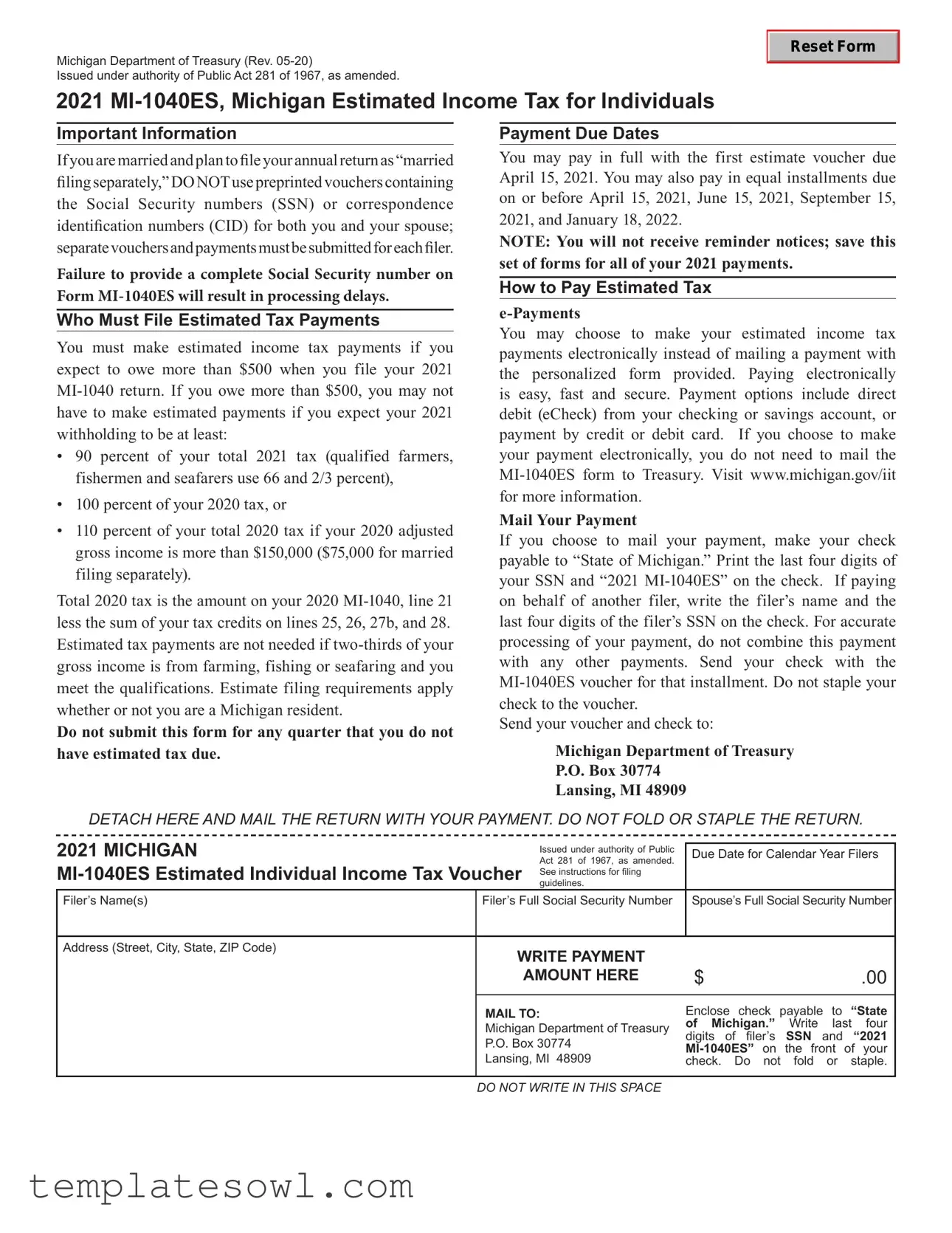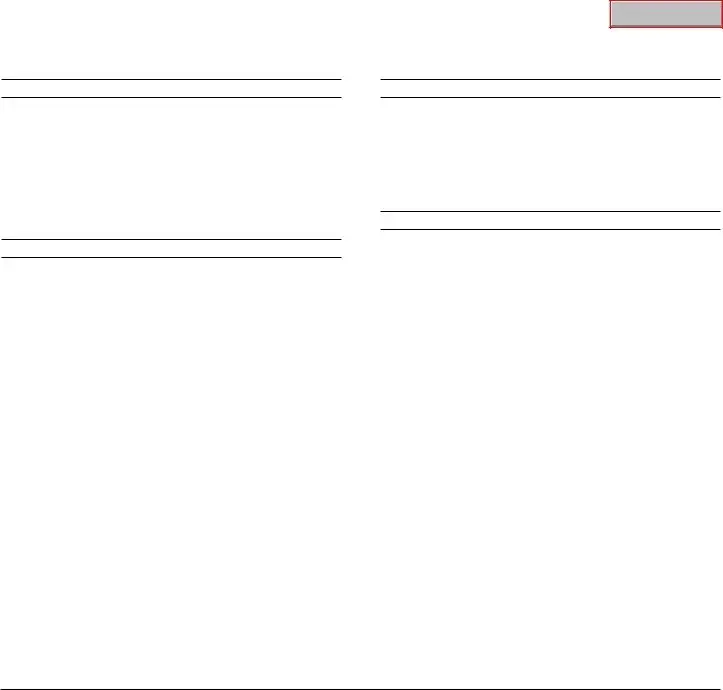What is the MI-1040ES form and who needs to use it?
The MI-1040ES form is the Michigan Estimated Income Tax form designed for individuals who expect to owe tax when they file their annual income tax return. If you anticipate owing more than $500 in taxes for the year, you are required to make estimated tax payments. This obligation remains regardless of your residency status in Michigan. It is important to file this form if your tax liability exceeds this threshold, as failing to do so may result in penalties and interest charges.
What are the payment due dates for the MI-1040ES estimated payments?
You have a couple of options when it comes to payment timing. You can pay the full estimated tax amount with your first voucher, due on April 15, 2021, or you can opt to make payments in installments. These installments are due on April 15, June 15, September 15, and January 18 of the following year. Keep in mind that you will not receive any reminders about these payments, so it is crucial to keep track of the due dates and save your form set for future reference.
How can I pay my estimated tax using the MI-1040ES form?
You have two primary methods for making payments: electronically or by mail. For those who prefer electronic payments, you can utilize options such as direct debit from your bank account or payment by credit or debit card. Simply visit the Michigan Department of Treasury's website for more information. If you choose to mail your payment, ensure that you make the check payable to “State of Michigan” and include relevant information to assist in accurate processing.
What information do I need to provide when mailing my payment?
When mailing your payment with the MI-1040ES form, be sure to include your name, the last four digits of your Social Security number, and “2021 MI-1040ES” on your check. If you are paying on behalf of someone else, include their name along with the last four digits of their Social Security number. Make sure to send your check along with the corresponding voucher for that installment, without stapling them together. Failure to provide complete information could lead to processing delays.
Are there any exceptions to filing estimated payments with the MI-1040ES?
Yes, certain exemptions exist. Individuals whose income primarily comes from farming, fishing, or seafaring may not need to file estimated payments if they meet specific criteria. As long as at least two-thirds of your gross income is derived from these activities, estimated tax payments might not be necessary. Always review your financial situation to determine if you fall into this exemption category.
What happens if I do not provide a complete Social Security number on the MI-1040ES?
Failure to provide a complete and accurate Social Security number when submitting the MI-1040ES form will lead to significant processing delays. This could impact your estimated payments and potentially incur penalties, so it is crucial to double-check all entries. Ensure that all personal information is complete and correct to prevent issues with your tax filings.

